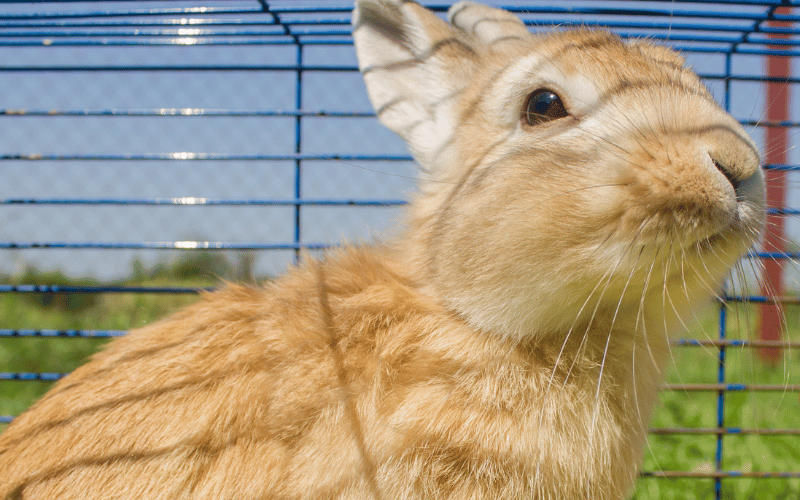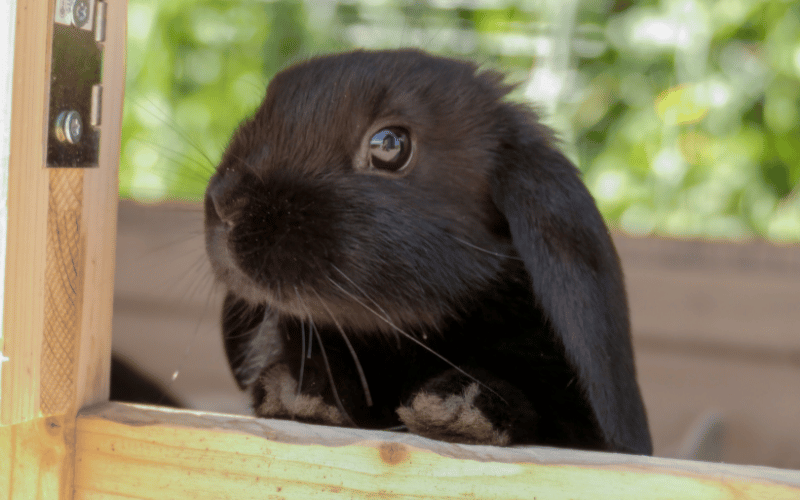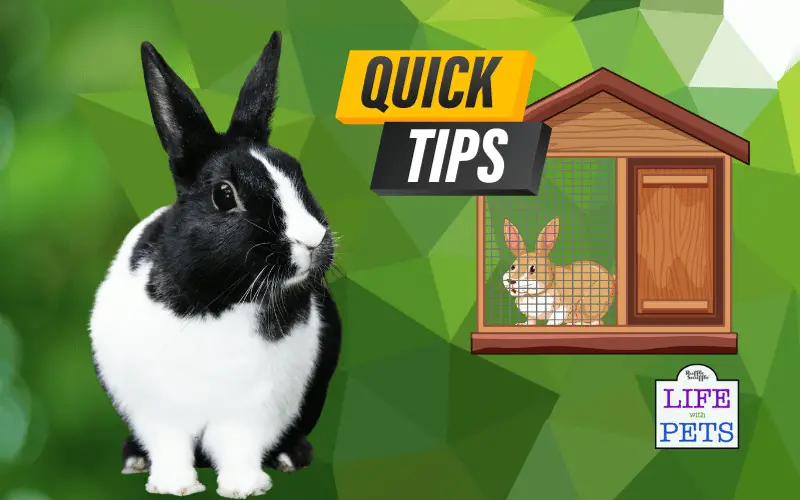Creating a safe, fun, and comfortable environment for your bunny when you live in a small space can be tough but not impossible! We have some helpful ideas for your compact bunny cage setup so your rabbit can have a pleasant space without taking over your entire home.
Whether your bunnies have free-roam of your home or not, they still need a cosy space to call their own. Creating a proper bunny cage setup can be daunting if you live in a tiny apartment or have a compact house, but we’re here to help.
Consider this your complete guide to creating a comfortable and hygienic enclosure for your little fluffy friend.
The Importance of Creating a Safe and Comfortable Environment
While working with limited space can be challenging, you must create a safe and comfortable space so your bunny can live a happy life. Hot, dirty, or poorly-ventilated cages can lead to illnesses and diseases.
A restricted space also means your pet rabbit won’t be able to play or exercise, which can cause weight gain, obesity, cardiovascular problems, anxiety, depression, and other problems. Yes, your bunny can become depressed if they don’t feel comfortable.
Without a hygienic, safe, and spacious environment, your bunny will be unhappy and could suffer from physical or emotional problems.
Elements and Considerations for Your Bunny Cage Setup
You can get creative when designing your rabbit enclosure to make it work for your unique space. However, some elements are non-negotiable and necessary for your bunny’s happiness, health, and safety. Below are all the required elements and considerations to keep in mind, along with tips for saving space.

Bunny Cage Elements
Before we discuss solutions for bunny cages set up in small spaces and other factors, you must ensure the cage has all the necessary elements to keep a bunny healthy and happy. Every rabbit living space should contain the following:
- Soft bedding
- Litter box
- Hideaway
- Water bottle
- Pellet food bowl
- Rabbit Toys
- Hay rack
While some people may not use a litter box, rabbit toys, or hay rack, we highly recommend including all these components to ensure the cage stays as clean as possible and your bunny is stimulated.
Cage Materials
Most people opt for a wire-sided cage instead of glass, plastic, or wood, as this allows plenty of ventilation and makes it easier to maintain the environmental temperature. Wood cages can be harder to disinfect, and other materials can feel suffocating for your rabbit, so we recommend metal wire cages.
Ensure the cage side openings are small enough so your bunny cannot escape. While you will fill the cage with soft bedding, ensure you choose a hard floor, such as wood or cement, so your bunny doesn’t suffer from pressure sores. Some people use dog crates, which can work well.
Lighting and Ventilation
As mentioned, we recommend wire cages because they offer superb ventilation. In addition, ensure you place the bunny cage in the most spacious area possible. The pen and the room should both be ventilated.
Your bunny cage should be dry; poor ventilation can lead to dampness and mould. Regarding lighting, try to choose a naturally bright environment, but avoid direct sunlight. Super dark places, like a basement or attic, are not good spots.
Space and Exercise Area
Bunnies need space to hop back and forth and play with their toys. The bunny enclosure should be at least four times the size of your rabbit, but the bigger, the better. For small to medium rabbits, you’ll need an enclosure at least two feet wide, three feet long, and, ideally, two feet high.
Larger rabbits will need a cage at least three feet wide and ten feet long, ideally three feet tall. If you have multiple rabbits, these dimensions apply to each rabbit. So two small rabbits will need a cage that is four feet wide and six feet long. We’ll discuss space-saving solutions below.

Indoor Vs. Outdoor and Placement
Some people use outdoor enclosures, but we encourage you to find space for an indoor rabbit cage. Bunnies can overheat, get cold, or be uncomfortable outdoors when the weather is less than perfect. Indoor enclosures are better for many reasons. It’s easier to control the temperature, lighting, and ventilation.
An indoor rabbit hutch keeps the bunny closer to you; they want to be around others and need social interaction to be happy. As far as placement, try to set up the cage in an area where you spend a lot of time. Secluding your bunny in a guest room you never use is not suitable for them. Bedrooms and living rooms are usually the best options.
Storage Solutions
We have a few helpful ideas if you’re working with limited space. Use vertical space as much as you can. This means elevating your rabbit cage off the floor and creating storage space underneath for all your rabbit’s belongings, like toys, extra food, etc.
Another vertical solution is to buy a stacked bunny cage with levels, so their bed, food, and water can be on one level and their play area on the other. These usually come with a little ladder for them to move between the levels. Some even have three or four levels!
You can also set up a longer, thinner cage. It’s not ideal, but a narrower cage can be a decent solution if your bunny can move and turn around comfortably. Depending on your home, a good solution may be a mobile enclosure. Some cages come on wheels so you can move them around based on your space needs.
Bottom Line
Bunnies need space, like every other animal. Even if you don’t have a mansion, you can still create a comfortable space for them to frolic and relax. Use these ideas to create a space-saving cage and ensure you include all the necessary elements discussed so your bunny can live a happy life.

